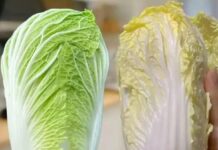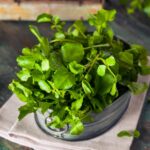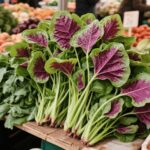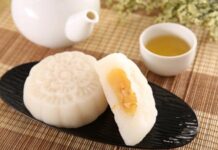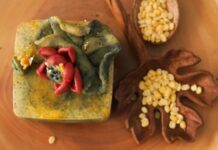In the world of flora, there exists a peculiar vegetable that captivates curiosity not only for its name, “càng cua,” which translates to “crab claws” in English and evokes imagery of aquatic life, but also for its impressive nutritional profile, especially its high content of calcium, iron, and vitamin C. This wild-growing vegetable is highly regarded by nutritionists and traditional medicine practitioners: meet the crab claw herb.
The Origin of the Name “Càng Cua”
The crab claw herb (scientific name Peperomia pellucida) is an herbaceous, succulent plant that typically grows wild in moist places such as roadsides, walls, tree bases, and gardens. The name “càng cua” derives from the unique shape of its flower stalks, which are slender and elongated, resembling the claws of a crab protruding from its body. This distinctive feature makes the plant easily identifiable.
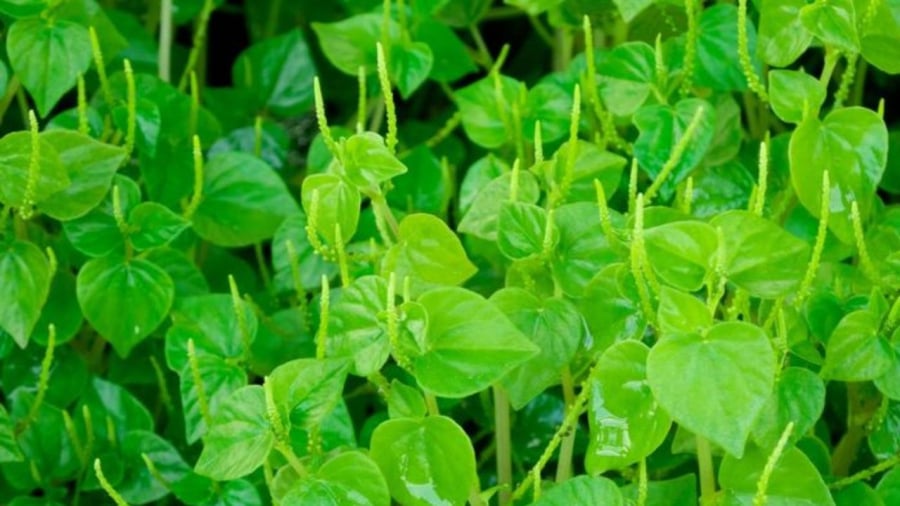
Impressive Nutritional Profile
Despite being a humble vegetable, the crab claw herb is highly valued by experts for its nutritional benefits. In 100g of fresh crab claw herb, you’ll find:
- 92% water content, which helps with heat reduction and detoxification
- 277mg of potassium, beneficial for cardiovascular health
- 124mg of calcium, essential for strong bones
- 34mg of phosphorus, aiding in calcium absorption
- 62mg of magnesium, 3.2mg of iron, and 5.2mg of vitamin C
Notably, its abundance of calcium makes it an excellent choice for the elderly, women, and individuals looking to prevent osteoporosis, anemia, and asthenia.
Prominent Benefits of the Crab Claw Herb
- Bone and Joint Health: Rich in calcium, phosphorus, and magnesium, this herb increases bone density, prevents osteoporosis, and supports the treatment of joint-related issues.
- Heat Reduction, Detoxification, and Skin Health: With its cooling properties and high water content, the herb helps cool the body during hot summers, detoxifies, and promotes clear skin by reducing acne and inflammation.
- Ideal for Dietary Restrictions and Diabetes: Low in calories and rich in antioxidants, it suits those aiming to lose weight, control blood sugar levels, or follow a dietary regimen.
- Traditional Medicine Applications: In traditional medicine, the crab claw herb is believed to have a slightly bitter taste and a neutral nature. It is used to reduce inflammation and swelling, treat sore throat, liver and stomach inflammation, and alleviate joint pain. It is also applied topically to treat acne, scabies, and slow-healing wounds.
Delicious and Nutritious Ways to Enjoy Crab Claw Herb
- Eat it raw or toss it into a salad: The crisp, succulent herb pairs well with oil and vinegar dressings, or it can be mixed with beef, frog legs, or shrimp for a flavorful twist.
- Cook it into a soup: Combine it with crab, lean meat, or fresh shrimp for a refreshing and tasty meal.
- Blend it into a nutritious drink: This helps cool the body, promotes diuresis, and aids digestion.
- Use it as a topical treatment: Crush the herb and apply it to inflamed or acne-prone skin to reduce inflammation and accelerate healing.
Easy as Crab Claw Herb Pie: Growing Your Own
If you’re a home gardening enthusiast, the crab claw herb is an ideal choice. All you need is a small balcony space or a tiny pot, moderate sunlight, and regular watering. This herb thrives in moist conditions and doesn’t require complicated fertilizers. In just 2-3 weeks, you’ll be able to harvest your very own fresh and safe supply of crab claw herb.
The crab claw herb, with its whimsical name reminiscent of aquatic life, is a “superfood” that grows right at your doorstep. Easy to cultivate and consume, it is a treasure trove of calcium and essential minerals, benefiting your bones, skin, blood, and immune system. If you’re seeking a vegetable that is both delicious and nutritious, the crab claw herb is an excellent choice for every household.












